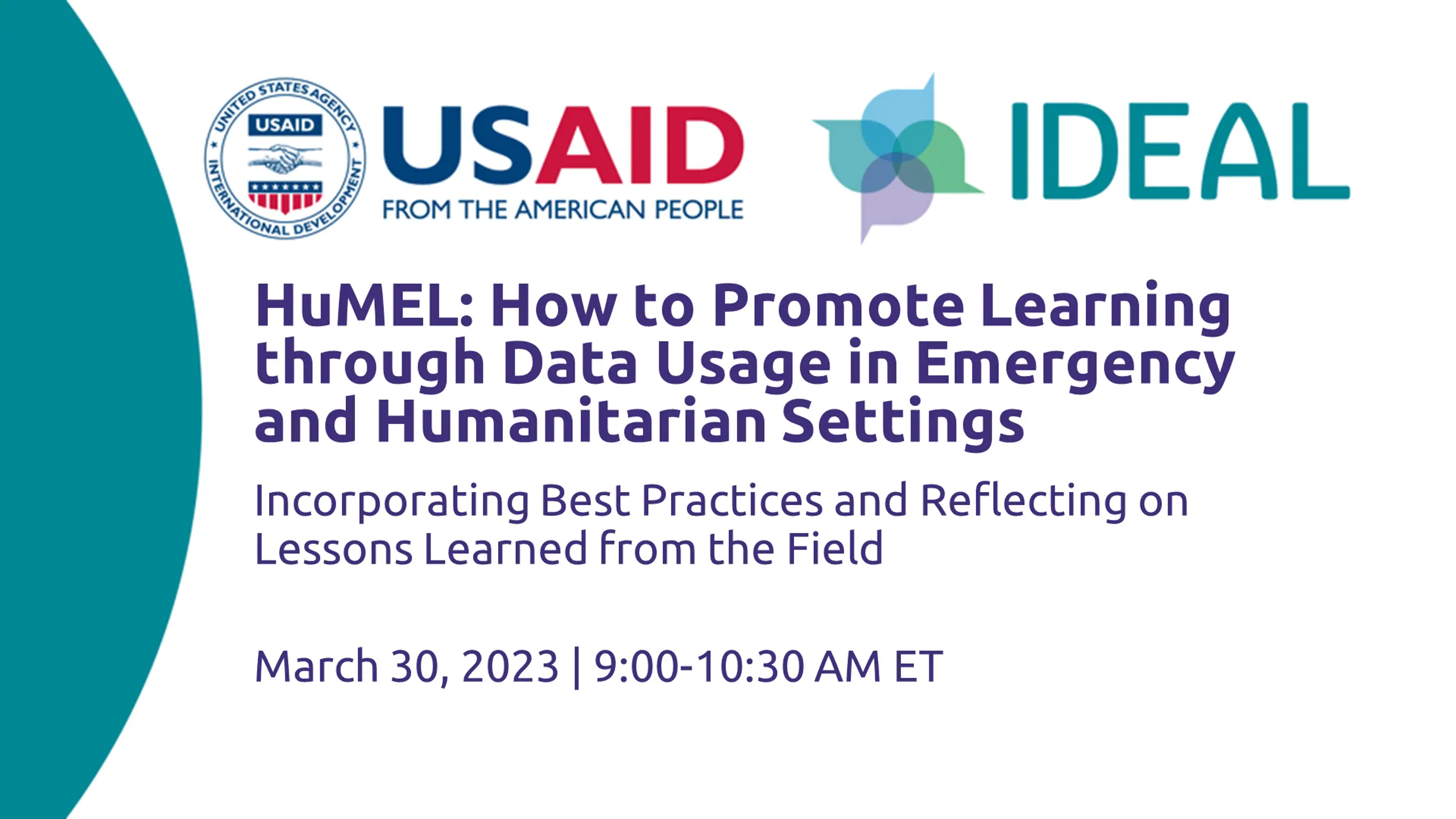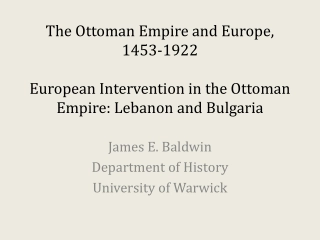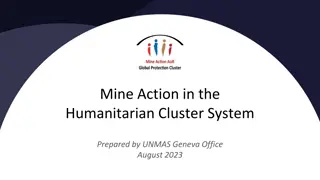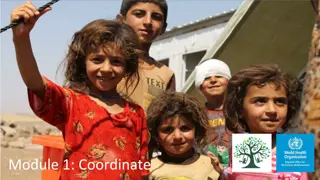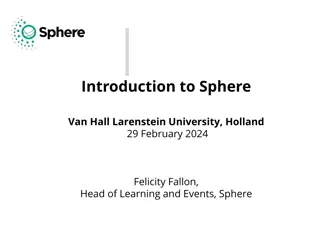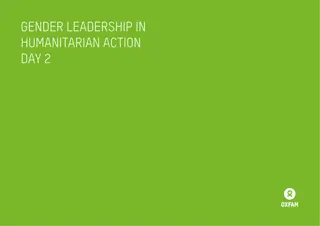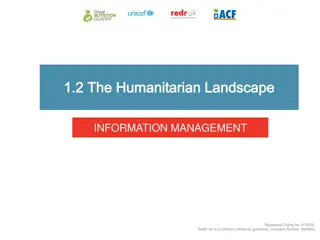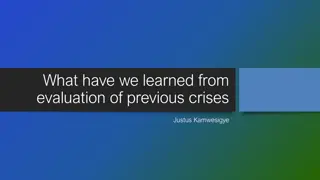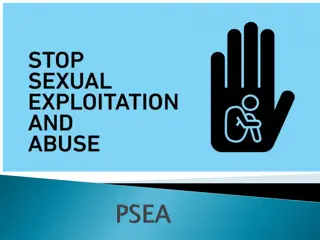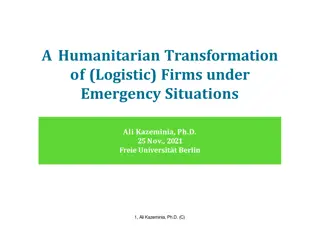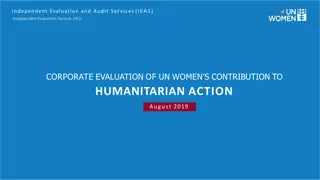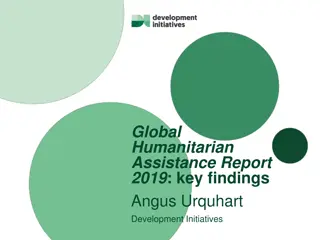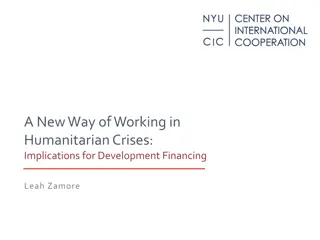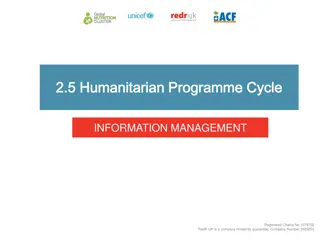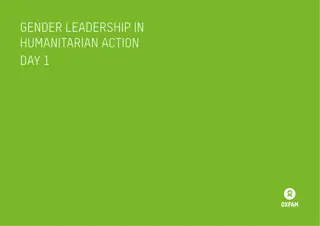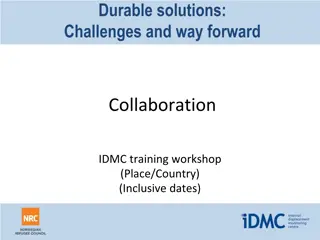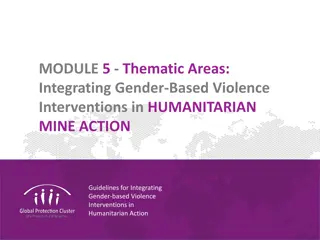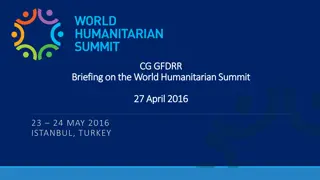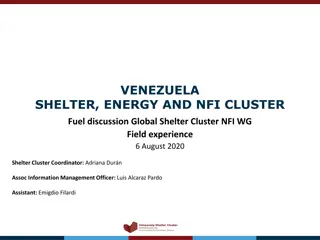Maximizing Learning Through Data in Humanitarian Settings
Explore best practices and lessons learned in using data for learning in emergency situations. Learn from field experiences and improve program efficacy. Discussion led by experts.
Download Presentation

Please find below an Image/Link to download the presentation.
The content on the website is provided AS IS for your information and personal use only. It may not be sold, licensed, or shared on other websites without obtaining consent from the author.If you encounter any issues during the download, it is possible that the publisher has removed the file from their server.
You are allowed to download the files provided on this website for personal or commercial use, subject to the condition that they are used lawfully. All files are the property of their respective owners.
The content on the website is provided AS IS for your information and personal use only. It may not be sold, licensed, or shared on other websites without obtaining consent from the author.
E N D
Presentation Transcript
HuMEL: How to Promote Learning through Data Usage in Emergency and Humanitarian Settings Incorporating Best Practices and Reflecting on Lessons Learned from the Field March 30, 2023 | 9:00-10:30 AM ET
HuMEL Peer Community Humanitarian Monitoring Evaluation & Learning Photo Credit Shashank Shrestha/Save the Children Community meetings every quarter Hosted by implementers
Best Practices Activate your video when you are speaking, if possible. Mute your microphone when you are not speaking. During Q&A, raise your hand if you d like to speak out loud. Use the chat box if you have any questions or comments!
Agenda Utilizing Data: Communication Gaps and Facilitating Learning (20 min) Best Practice in Utilizing Data for Learning and Adaptive Management (20 min) Food for Thought: A Pause and Reflect Toolkit for Emergency Programs (20 min) Wrap up Photo Credit Shashank Shrestha/Save the Children
Utilizing Data: Communication Gaps & Facilitating Learning Global Communities Humanitarian Assistance Tefera Mekonnen, Senior Monitoring and Evaluation Manager
Agenda Data Utilization Program Background Gaps/Challenges Solution Process Results Photo Credit Shashank Shrestha/Save the Children
Yemen Program Background Program Name: Emergency Food and Nutrition Assistance Location: Yemen - Al Dhale, Al Azariq, and Qa'atabah districts Program Description: Addressing urgent food insecurity needs for almost 40,000 vulnerable individuals. Seeking to increase food security, improve dietary diversity, and reduce acute malnutrition through food assistance and WASH intervention.
Gap: Communication Lack of interaction between departments causes silos Staff have busy schedules and are not always in the same location Systems and tools exist, (Sharepoint, DDM, PDM, TPM), but they are not being fully utilized for program improvement and learning. investment is required to make reports actionable
Solution: Program Quality Review Quality reviews are an industry best practice, but we are intentional in how and when we implemented them. Sometimes simple solutions are the best. Improve efficiency and effectiveness in the program implementation Promote continuous learning, project progress reflections, and cross learning among departments to take informed decisions Photo Credit Kelley Lynch
Process: Program Quality Review Purpose Period Participants Agenda Challenges Discussion Questions Photo Credit Kelley Lynch
Process: Program Quality Review Focus on efficient use of assessment results/findings Developing joint action plans Purpose Monthly or Quarterly Period Photo Credit Kelley Lynch Program and M&E teams. The program quality meeting participants will be fully responsible to pass the action points to their team Participation
Process: Program Quality Review Results of the PDMs, KAPs, baseline surveys, etc. Feedback and complaint mechanism Comments and discussions Agenda Conflicting staff priorities Staff attitude & perception Challenges Photo Credit Kelley Lynch What is most effective method of sharing reports/ information? Reflections on the process, ideas for improvement? Discussion Questions
Results Adapted best practices for COVID-19 Finished programs on time under budget and met or exceeded targets for last 3 years Developed new approach for feedback mechanism Changed Modalities for food assistance program
Q&A For further questions: Tefera Mekonnen: tmekonnen@globalcommunities.org This presentation is made possible by the generous support of the American people through the United States Agency for International Development (USAID). The contents are the responsibility of the Implementer-led Design, Evidence, Analysis and Learning (IDEAL) Activity and do not necessarily reflect the views of USAID or the United States Government.
Improving data use for adaptive management A lesson from Catholic Relief Services South Sudan - Pathway to Resilience Project (P2R) Ermias Emiru CRS South Sudan - MEAL Program Manager
Agenda 1. Background (M&E data use vs Adaptive Management) 2. Which type of data, data source, and when? 3. What has changed? 4. Key lessons and recommendations 5. Challenges/gaps for learning Photo Credit Shashank Shrestha/Save the Children
Background Key gaps noted with the M&E, and FRM data use: Data use focuses on reporting & accountability Data use for Adaptive program management & learning - is not clear & challenging The experience of CRS south Sudan- Pathway to Resilience (P2R) project: Applied rigorous and interlinked series of data and information review sessions Use information from the field, M&E data, & FRM Adaptation make small-scale changes leading to a bigger impact Photo Credit: Jonathan Hyams/Save the Children
Which data and when? Available data and review reschedule Available data Monthly Weekly Annual Quarterly Weekly program update/info. Annual Monthly ITT data Learning event Monthly MEAL TWG ALL level (MEAL + non-MEAL staff) ITT data review Community feedback review PDM and exit interview Develop action plan for improvement Monthly FRM data (centralized) Annual Survey Annual report Learning questions (Out come level changes vs program quality) Quarter ITT & Quarterly review & Reflection (centralized) report Weekly program Meeting All levels (MEAL & non- MEAL staff) Weekly report/update review Identify challenges Action planning Annual report APBS Quarterly progress (ITT and narrative) PDM survey & exit interview Including reflection on survey data) PDM survey & exit interview data Learning question
What has changed? Responsiveness to feedback (69% within a month) Sector Integration Partnership (engage partners) Coverage Satisfaction Planning & monitoring Changed approach/modality Awareness raising (43% BL 98%) Targeting Improved Ongoing Programming (Quality & relevance) Improved effectiveness of the feedback system (FRM/AAP system changes) Partnership and coordination
Key lessons and recommendations a. Small changes Big impact: regular data review led to continuous small-scale adjustments & improves Data review with triangulation, interpretation, and development of action plans MEAL system design integrates data review (with timeline, tools, and procedures) Management buy-in, and collaboration between MEAL and Non-MEAL. Communicate with the donor adaptive management is obvious in a complex and uncertain operational environment Data review ensures linkage between the MEAL quadrant (Monitoring & Evaluation, FRM learning ) b. c. d. e. f.
Key challenges/gaps Flexibility approved DIP, and LOA targets are still untouched areas Little is explored to use evaluation data (such as APBS) for adaptation Intentionality - to pause and reflect, and adapt Documenting how the small changes impacted programming (the butterfly effect) Photo Credit Kelley Lynch
Q&A This presentation is made possible by the generous support of the American people through the United States Agency for International Development (USAID). The contents are the responsibility of the Implementer-led Design, Evidence, Analysis and Learning (IDEAL) Activity and do not necessarily reflect the views of USAID or the United States Government.
Food for Thought: A Pause and Reflect Toolkit for Emergency Food Security Programs Conrad Murendo, Program Learning Advisor, Mercy Corps Zimbabwe
Food for Thought = Pause and Reflect Programs transition without systematically learning Need to Pause and Reflect Yet there was no guidance or toolkit on how to pause and reflect IDEAL Small Grants- 2020- 2022 Pilot in Indonesia (Feb 2022) and peer-reviewed USAID s ADS Chapter 201 defines pause and reflect as a component of learning and adaptive management, the act of taking time to think critically about ongoing activities and processes and plan for the best way forward (ADS 201.3.7.2, 143).
When do we Pause and Reflect? Timing of Pause and Reflect Session Multi-year annually Single year (9-12 months) near end of program Less than 9 months After Actions Reviews
Toolkit Offers Step-by-step guidance, resources and templates to conduct Pause & Reflect session Practical tools for planning, implementing and Facilitators Guide Shown in next slide
SOAR Discussion Facilitators Guide Step 1 (40min) Review probing questions related to scope, workplan, budget, quality etc) Strengths Source of Evidence Step 2 (40min) Identify and write 3-5 strengths and sources of evidence Identify and write 3-5 opportunities and sources of evidence Step 3 (20min) Think about aspirations, write them down, share and discuss. Agree and write them down Opportunities Source of Evidence Aspiration Result Step 4 (25min) For each aspiration, identify the result if the aspiration is met
SOAR Framework in use in MRED Program (Examples) STRENGTHS: Early Warning System (EWS) installed in 10 villages and reached 34 communities. OPPORTUNITIES: Need to install radio transmitters, power source backup to send EWS. ASPIRATIONS: EWS to be equipped with backup communication to share EWS before and during disasters. RESULTS During emergencies and when there are no electricity lines and GSM lines, radio communication is crucial as backup. Action Plan: Results were used for the MRED 2.0 program improvement
Toolkit Roll-out PaQ Retreat in Netherlands March 2023 Zimbabwe BHA ELEVATE; WFP Urban Resilience Nigeria three programs from March 2023 Yemen Yemera III
Q&A This presentation is made possible by the generous support of the American people through the United States Agency for International Development (USAID). The contents are the responsibility of the Implementer-led Design, Evidence, Analysis and Learning (IDEAL) Activity and do not necessarily reflect the views of USAID or the United States Government.
Thank you! Questions? Contact Frank Riely at friely@tangointernational.com This presentation is made possible by the generous support of the American people through the United States Agency for International Development (USAID). The contents are the responsibility of the Implementer-led Design, Evidence, Analysis and Learning (IDEAL) Activity and do not necessarily reflect the views of USAID or the United States Government.
